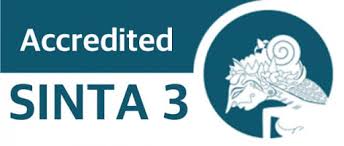Pengaruh Penggunaan Media Audio Visual Terhadap Hasil Belajar Kosa Kata Bahasa Inggris Siswa Kelas II MI Dwi Dasa Warsa
DOI:
https://doi.org/10.54069/attadrib.v5i1.226Keywords:
English Vocabulary, Learning Outcomes, Audio-Visual MediaAbstract
The problem in this research is the lack of mastery of students ‘English vocabulary, the teacher’s lack of creativity in using learning media, and students’ assumption that English lessons are difficult and ultimately ignored. Formulation of the problem “how the influence of the use of audio-visual media on learning outcomes of English vocabulary students in grade II MI Dwi Dasa Warsa. The study aims to determine the effect of audio-visual media on learning outcomes of English vocabulary material Pets and Wild Animals in Class II MI Dwi Dasa Warsa This study is quasi-experimental design research with one group pre-test design research. The population in this study was all students in MI Dwi Dasa Warsa with a total of 273 students, while the sample were all students of class II MI Dwi Dasa Warsa amounting to 37 students. Data were analyzed using the Mann-Whitney test formula. From the hypothesis testing, it can be concluded that there is a significant influence of the use of audiovisual media on the learning outcomes of English vocabulary material Pets and Wild Animals.
Downloads
References
Arikunto, S. (1983). Prosedur penelitian: Suatu pendekatan praktik. PT. Bina Aksara, Jakarta.
Arikunto, S. (2008). Dasar-Dasar Evaluasi Pendidikan (P. B. Aksara, Ed.).
Bloomfield, L. (1995). Bahasa (Language). Gramedia Pustaka Utama.
Dhimolea, T. K., Kaplan-Rakowski, R., & Lin, L. (2022). A Systematic Review of Research on High-Immersion Virtual Reality for Language Learning. TechTrends. https://doi.org/10.1007/s11528-022-00717-w
Fauziah, U. N. E., Suryani, L., & Syahrizal, T. (2019). Penerapan Google Classroom Dalam Pembelajaran Bahasa Inggris Kepada Guru-Guru Bahasa Inggris Smp Di Subang. Abdimas Siliwangi, 2(2), 183–191. https://doi.org/10.22460/as.v2i2p183-191.3281
Khusniyah, N. L., & Hakim, L. (2019). Efektivitas Pembelajaran Berbasis Daring: Sebuah Bukti Pada Pembelajaran Bahasa Inggris. Jurnal Tatsqif, 17(1), 19–33. https://doi.org/10.20414/jtq.v17i1.667
Kohnke, L., & Moorhouse, B. L. (2022). Facilitating Synchronous Online Language Learning through Zoom. RELC Journal, 53(1), 296–301. https://doi.org/10.1177/0033688220937235
Maptuhah, M., & Juhji, J. (2021). Pengaruh Perhatian Orangtua dalam Pembelajaran daring terhadap Motivasi Belajar Peserta Didik Madrasah Tsanawiyah. Attadrib: Jurnal Pendidikan Guru Madrasah Ibtidaiyah, 4(1), 25–34. https://doi.org/10.54069/attadrib.v4i1.127
Musyrifa, F. A., Rahmah, A., Wahyuni, S., & Fitriyani, L. (2020). Metode Picture and Picture dalam Meningkatkan Motivasi Belajar Bahasa Arab pada Maharah Kitabah. Arfannur, 1(1), 15–26. https://doi.org/10.24260/arfannur.v1i1.147
Sugiyono. (2008). Metode penelitian pendidikan: (Pendekatan kuantitatif, kualitatif dan R & D). Alfabeta.
Sundari, A. (2021). Manajemen Kegiatan Ekstrakurikuler Dalam Meningkatkan Prestasi Non Akademik Siswa. Munaddhomah: Jurnal Manajemen Pendidikan Islam, 2(1), 1–8. https://doi.org/10.31538/munaddhomah.v2i1.45
Sundari, A., & Hasibuan, A. (2022). Analisis Gaya Bahasa Dalam Karakter Tokoh Pada Novel Bumi Karya Tere Liye. Ability: Journal of Education and Social Analysis, 100–108.
Tarigan, H. G. (1985). Pengajaran gaya bahasa. Angkasa.
Downloads
Published
How to Cite
Issue
Section
License
Copyright (c) 2022 Edy Kurniawan, Mokhammad Nizzam, M. Alfin Fatikh, Muhammad Husnur Rofiq

This work is licensed under a Creative Commons Attribution-ShareAlike 4.0 International License.





